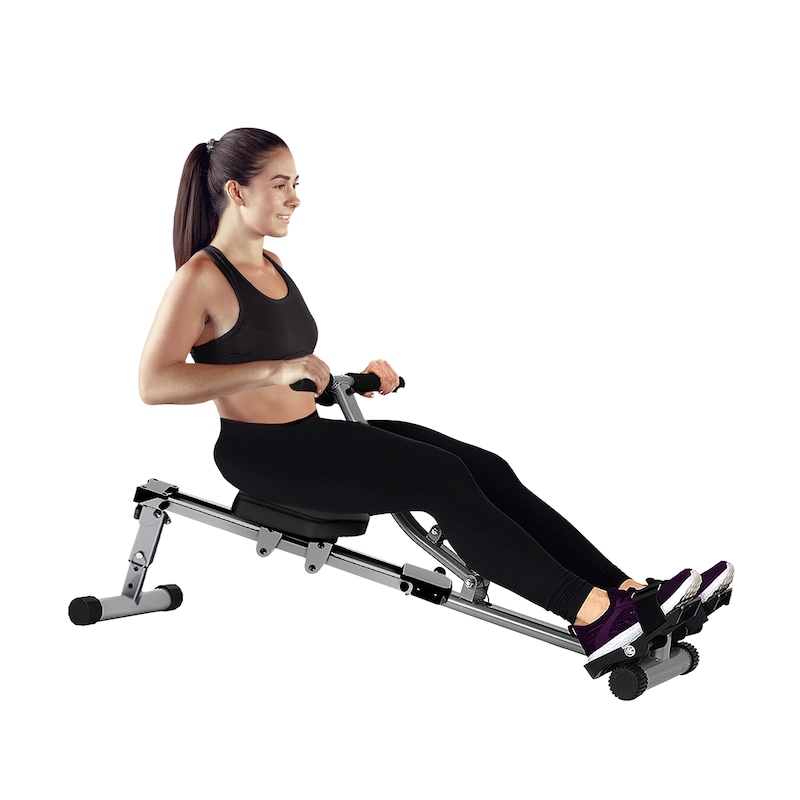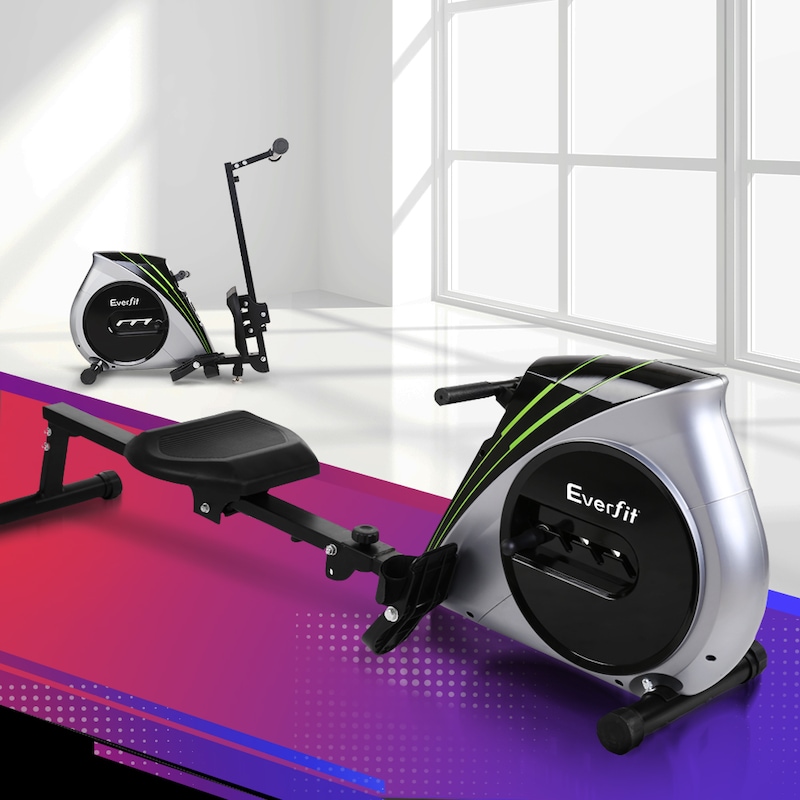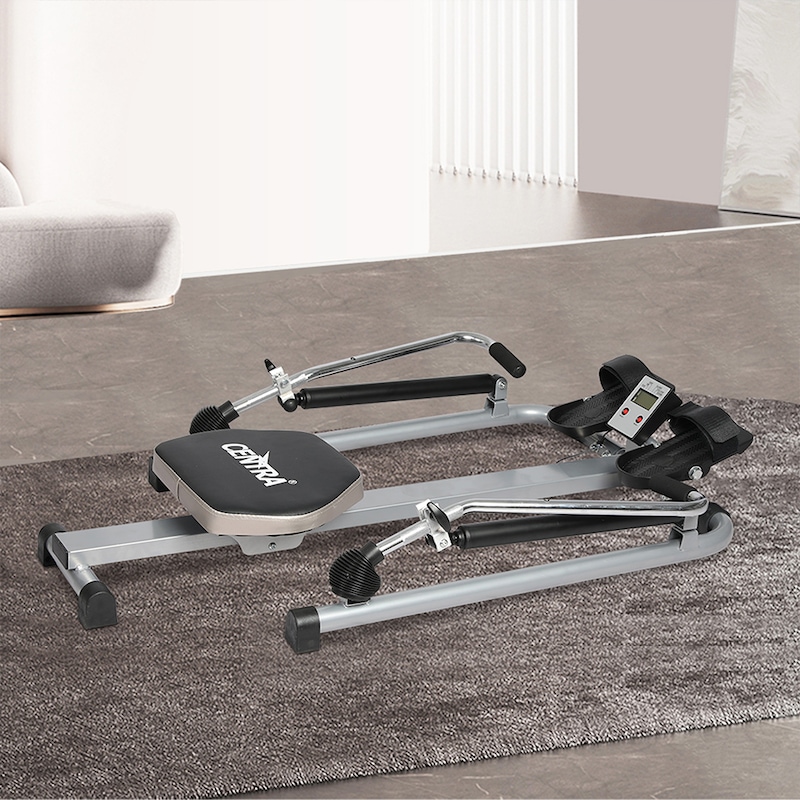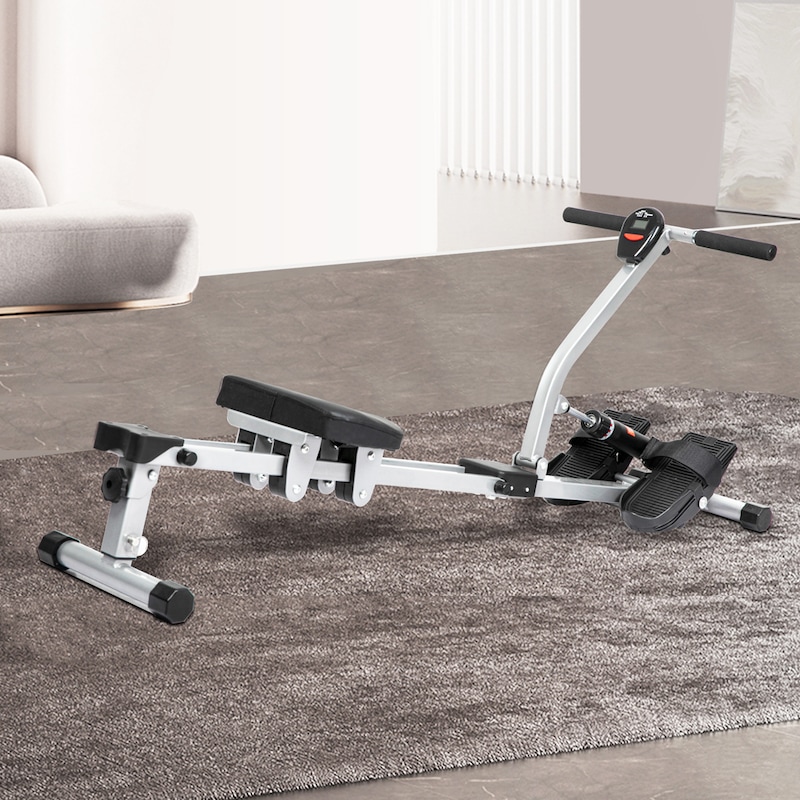Your cart is currently empty!
Rowing Machines: The Ultimate Guide to Choosing Best for Home Workouts
Rowing machines have become an increasingly popular choice for fitness enthusiasts seeking a full-body workout that combines cardiovascular exercise with strength training. Offering low-impact yet high-intensity workouts, rowing machines target multiple muscle groups, including the legs, core, back, and arms, making them a versatile addition to any home gym. However, with various types of rowing machines available, each utilizing different resistance mechanisms, it can be challenging to choose the right one for your needs. This comprehensive guide will explore the different types of rowing machine resistance, their benefits, and which ones are best suited for home workouts.
Benefits of Rowing Machines
Before diving into the types of rowing machines, it’s important to understand the numerous benefits they offer:
- Full-Body Workout: Rowing machines engage up to 86% of the body’s muscles, including the legs, back, core, and arms. This makes them one of the most effective full-body workout machines.
- Low Impact: Rowing is a low-impact exercise, which means it is gentle on the joints. This makes it ideal for people of all fitness levels, including those with joint issues or those recovering from injuries.
- Calorie Burning: Due to the full-body engagement, rowing is highly effective for burning calories. A moderate rowing workout can burn between 300 to 500 calories per hour.
- Improves Cardiovascular Health: Regular rowing workouts help improve cardiovascular health by increasing heart rate, enhancing lung capacity, and improving overall endurance.
- Strengthens Muscles: Rowing builds muscular strength and endurance, particularly in the legs, back, and arms, making it a great tool for both aerobic and anaerobic training.
Types of Rowing Machine Resistance
The performance of a rowing machine is largely defined by its resistance type. Understanding the different types of resistance is crucial for selecting the best rowing machine for your home workout needs. The four main types of rowing machine resistance are air, water, magnetic, and hydraulic.
1. Air Resistance Rowing Machines
Air resistance rowing machines are among the most common and widely used types. They generate resistance using a flywheel with fan blades that turn against the air as you row. The harder and faster you pull, the greater the resistance.
Pros:
- Smooth and Dynamic Resistance: The resistance adjusts automatically based on your rowing intensity, providing a smooth and natural rowing experience.
- Ideal for Intense Workouts: Air rowers are popular in CrossFit gyms and among professional rowers because they provide a challenging workout.
- Accurate Performance Metrics: Most air rowers come with advanced monitors that provide detailed workout data such as strokes per minute, distance, time, and calories burned.
Cons:
- Noise Level: The fan blades can be noisy, making them less suitable for shared living spaces or quiet environments.
- Size: Air rowers tend to be larger and less compact than other types.
2. Water Resistance Rowing Machines
Water resistance rowing machines use paddles suspended in a tank of water to create resistance. Much like air rowers, the resistance increases as you row harder, simulating the feel of rowing on water.
Pros:
- Realistic Rowing Experience: The water resistance mechanism mimics the feel and sound of rowing on a river or lake, providing a more immersive experience.
- Smooth Resistance: Water rowers offer smooth and consistent resistance, which is adjustable by increasing or decreasing the amount of water in the tank.
- Aesthetic Appeal: Many water rowers have a sleek, wooden design that adds an attractive element to any home gym.
Cons:
- Heavy and Bulky: The water tank adds weight, making the machine less portable and more challenging to move around.
- Higher Maintenance: The water in the tank may need to be changed or treated periodically to prevent algae build-up.
3. Magnetic Resistance Rowing Machines
Magnetic resistance rowing machines use magnets to create resistance. The distance between the magnets and the flywheel can be adjusted to change the resistance level, providing a smooth and quiet rowing experience.
Pros:
- Quiet Operation: Magnetic rowers are known for their nearly silent operation, making them perfect for home use, especially in apartments or shared spaces.
- Adjustable Resistance Levels: They usually come with multiple resistance settings that can be adjusted manually or digitally, allowing for customized workouts.
- Low Maintenance: Unlike water or air rowers, magnetic rowers require minimal maintenance.
Cons:
- Less Dynamic Resistance: Unlike air and water rowers, the resistance on magnetic rowers does not change based on rowing intensity, which can result in a less natural rowing feel.
- Less Realistic: Magnetic rowers do not replicate the feel of rowing on water as closely as air or water resistance rowers.
4. Hydraulic Resistance Rowing Machines
Hydraulic rowing machines use pistons filled with air or fluid to create resistance. The pistons are attached to the handlebars, and the resistance is adjusted by changing the piston settings.
Pros:
- Compact and Affordable: Hydraulic rowers are generally smaller, more compact, and more affordable, making them ideal for home gyms with limited space or for budget-conscious buyers.
- Adjustable Resistance: Many hydraulic rowers offer adjustable resistance levels, making them versatile for different fitness levels.
Cons:
- Limited Range of Motion: The rowing motion may not be as smooth or natural as other types, potentially limiting the effectiveness of the workout.
- Less Durable: Hydraulic rowers may not be as durable as air, water, or magnetic rowers, especially with frequent use.
Best Rowing Machines for Home Workouts
When it comes to choosing the best rowing machine for home workouts, the decision largely depends on individual preferences, workout goals, available space, and budget. Here are some of the best options:
- For Realistic Rowing Feel: If you want a rowing machine that closely mimics the sensation of rowing on water, a water resistance rower like the WaterRower Natural Rowing Machine is an excellent choice. It offers a smooth, natural rowing feel and comes with a beautifully crafted wooden frame that adds elegance to your home gym.
- For Quiet and Versatile Workouts: If a quiet operation is a priority, a magnetic resistance rower like the Concept2 Model D or Everfit Rowing Machine is ideal. The magnetic mechanism provides adjustable resistance levels and a near-silent workout experience, perfect for apartments or shared living spaces.
- For High-Intensity Workouts: For those who are looking for a robust workout option that offers dynamic resistance, an air resistance rower such as the Concept2 Model E or Assault AirRower Elite is highly recommended. These machines provide a challenging workout with smooth, adjustable resistance that responds to your rowing speed and intensity.
- For Budget and Space-Saving: If space and budget are a concern, a hydraulic resistance rower like the Sunny Health & Fitness SF-RW5639 is a great option. It offers adjustable resistance, a compact design, and is much more affordable than other types.
Conclusion
Rowing machines offer an effective, full-body workout that can be tailored to suit various fitness levels and goals. Understanding the different types of rowing machines—air, water, magnetic, and hydraulic—and their unique features can help you choose the best one for your home gym. Whether you prefer the realistic water feel, the quiet magnetic operation, the intense air resistance, or the budget-friendly hydraulic option, there is a rowing machine out there that fits your needs. Invest in the right rowing machine today and take a step closer to achieving your fitness goals from the comfort of your home!





